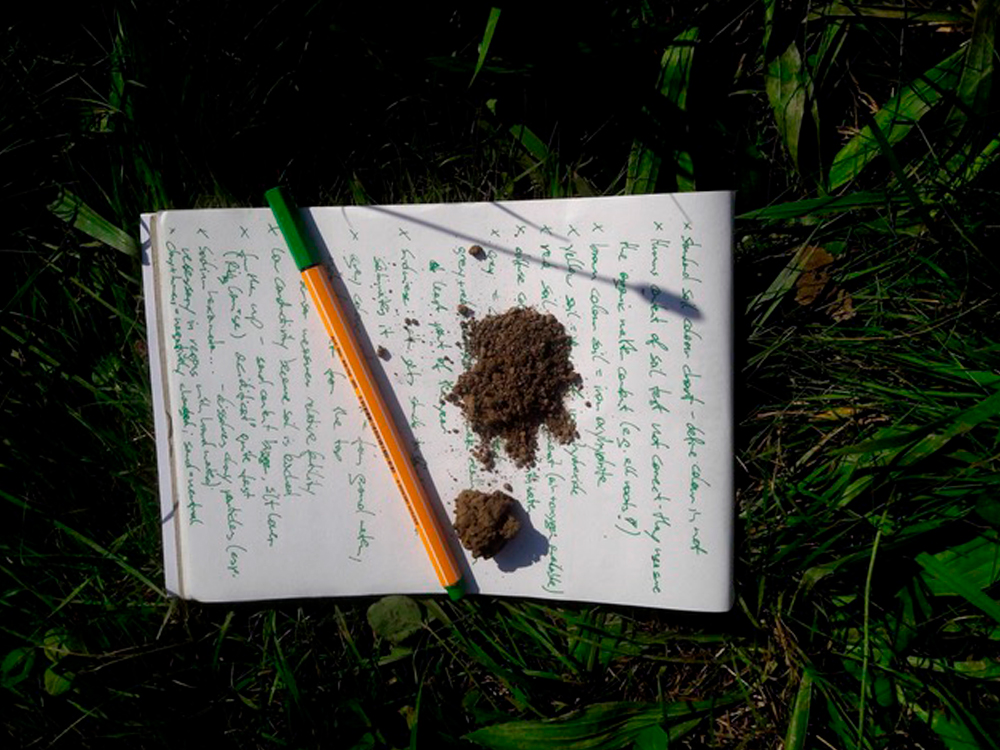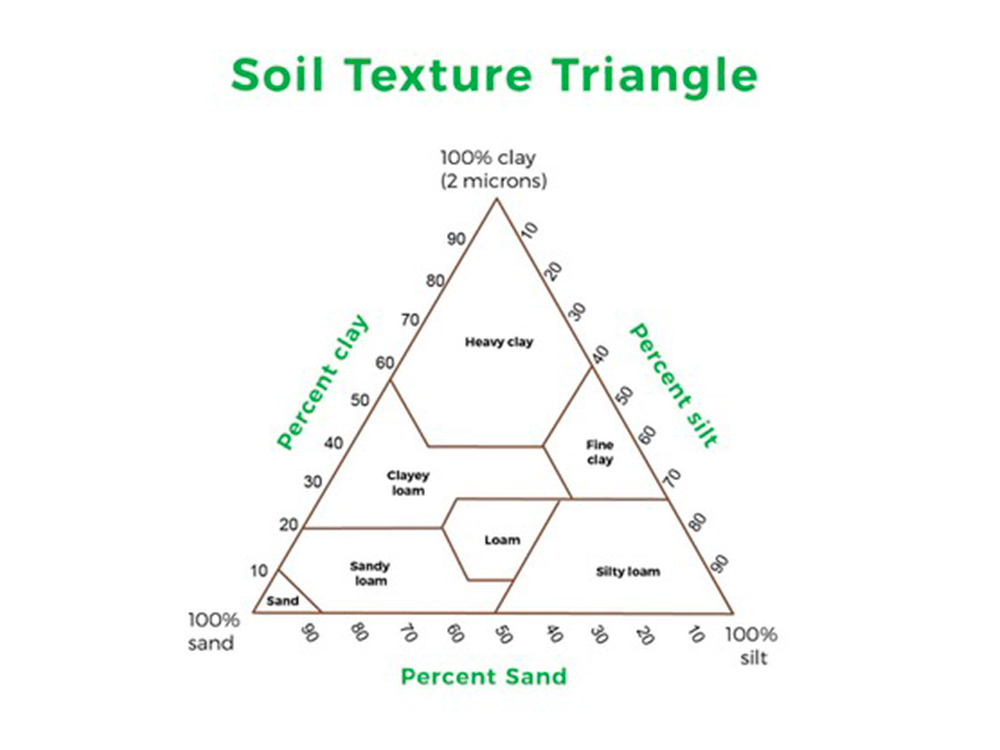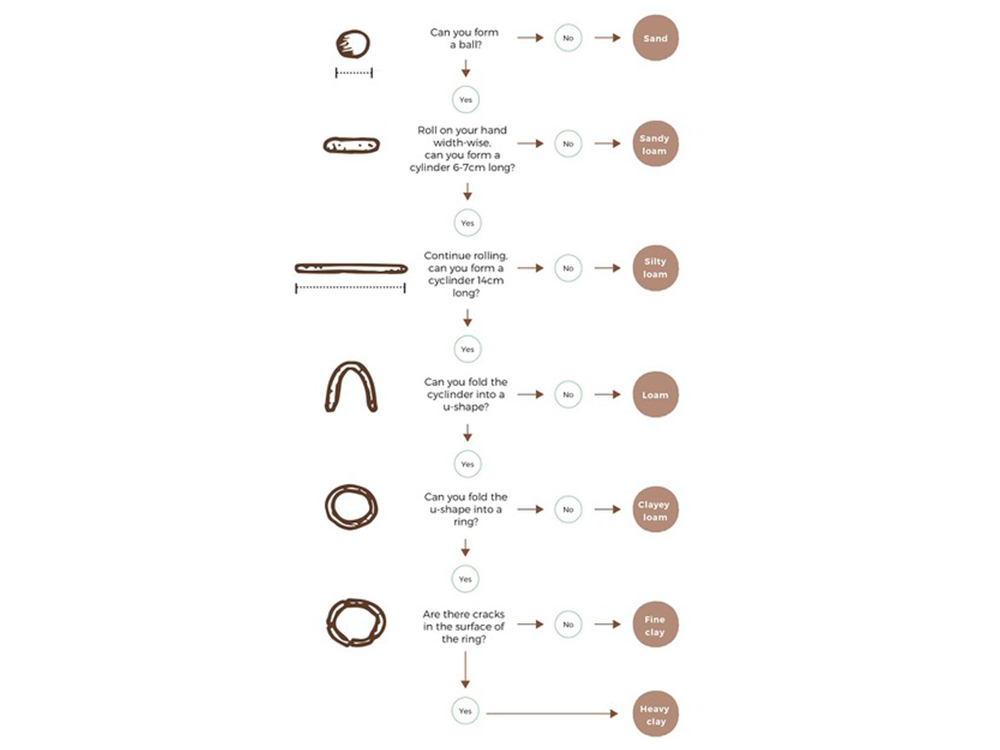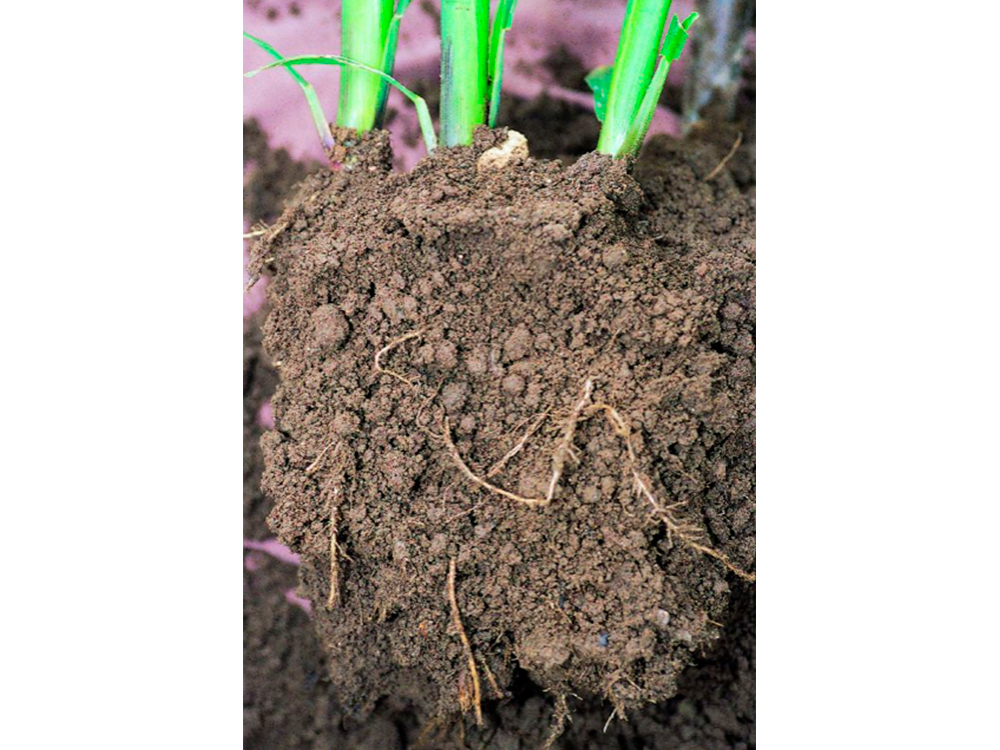HANDY TIPS TO KNOW YOUR SOIL TYPE AND SOIL TEXTURE

How do different soil types roll in your hand? Do you know your sandy loam from your fine clay? And what does it all mean for your growing practices? In this article, first published by Grow Observatory, Victoria J. Burton helps us better understand the stuff we stand on.
Soils are composed of mineral (tiny pieces of rock) and organic (plant remains) components. Depending on your soil type this can be nearly all mineral e.g. very sandy soils, or nearly all organic material e.g. peat. Soil texture refers to the relative amounts of three mineral particle sizes: sand (the largest), silt and clay (the smallest). The diagram below shows the relative sizes of these particles.
In a laboratory soil texture is measured by passing a sample of soil through a series of sieves with different sized meshes then calculating what proportion of the soil sample comprises the three different particle sizes. A soil texture triangle can be used to classify the soil texture depending on the proportions of each particle size. Each country has a slightly different classification system with different names for each soil texture. The soil texture triangle below uses the Food and Agriculture Organization (FAO) classification as it can reliably be determined with a simple hand texturing technique. Knowing your soil texture is important as it influences water drainage, nutrient levels and susceptibility to erosion.

Measuring Soil Texture
Use this guide to determine the soil texture in your growing space.
You will need:
- Gardening gloves to protect your hands
- Trowel to collect the soil
- Ruler or measuring tape to measure the correct depth
Dig a hole to 15 cm depth using your trowel — use your ruler or measuring tape to measure the correct depth. At 15 cm from the surface push the trowel into the side of the hole to take a sample at this depth.
Once you have collected your sample, break up the soil with a spoon or your fingers, and remove any stones, gravel, and large organic matter like leaves or roots. It is best to wear gardening gloves for this part to protect your hands.
Hand Texturing Test
Watch our short video outlining the process of assessing your soil texture
Manipulating soil in your hand and observing what shapes you can form gives an estimate of soil texture. To begin the hand texturing test take a handful of soil and add water until the soil begins to stick together without sticking to your hand, kneading the water and soil between your fingers and palm. Now follow the flowchart below to determine your soil texture.

Soil Textures
Sands
Sandy soils have large particles and gaps between them so can be difficult to grow in as they dry out quickly and nutrients are washed away quickly. However they do warm up quickly and are easy to dig.

Loams
Loams are ideal for growing food as they have a good balance of smaller and larger particles, which means they have space between for air and water (most plant roots need both). Water does drain in loam soils, but not too quickly, so they do not get too wet or too dry, and hold nutrients well.

Clays
Clay soils can get waterlogged as the spaces between the particles are so fine that water cannot penetrate — plants will die if their roots are underwater for too long. Clay soils are particularly vulnerable to compaction — walking or machinery squashes the particles together which increases the risk of waterlogging. Avoid walking on clay soils, especially in wet weather, or spread your weight by resting on a board. When clay soils dry out they become very hard which makes it difficult for plant roots to penetrate them, and water tends to run off the surface. Clay soils take longer to warm up in spring and can be difficult to dig but on the positive side usually have good nutrient levels.

Working With Your Soil Texture
Soil texture is very stable and can be difficult to change directly except by adding sand, so it’s best to choose crops that grow well in the soil you have. Root vegetables such as carrots and parsnips grow well in soils with more sand and nutrient-hungry plants such as brassicas grow better in soils with more clay. Both sandy and clay soils can be improved by adding more organic matter such as farmyard manure or compost, which creates a more open soil structure, soak up and retain water and nutrients. You could build up organic soils above your existing soil through ‘no dig’ gardening methods.




